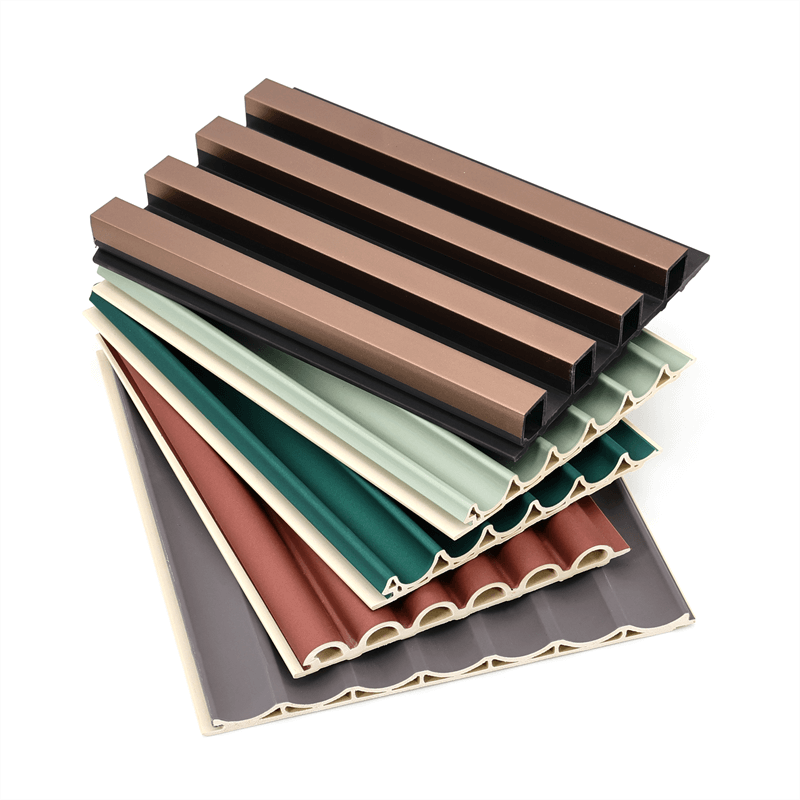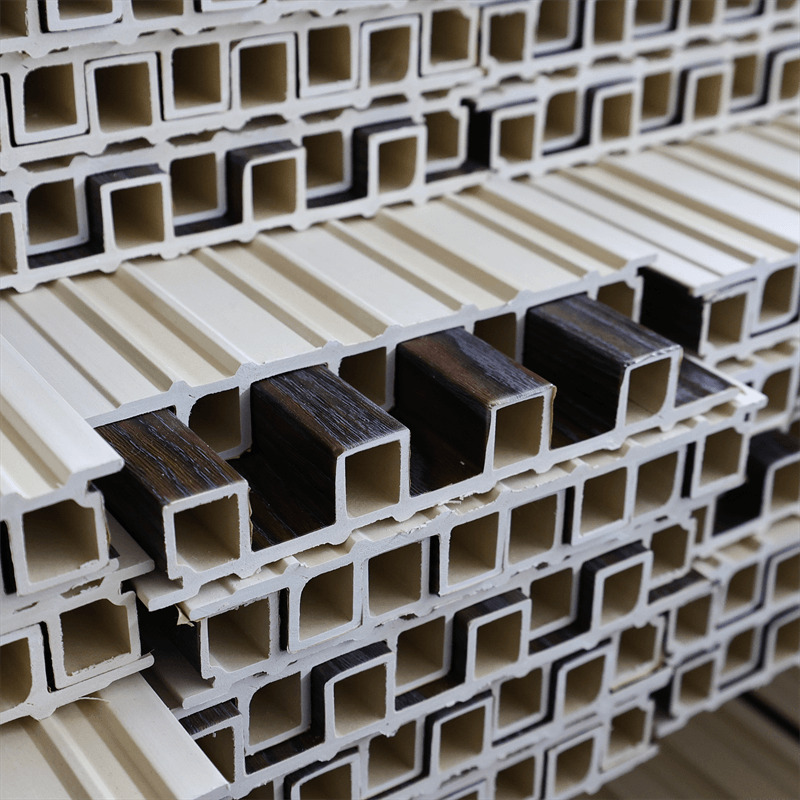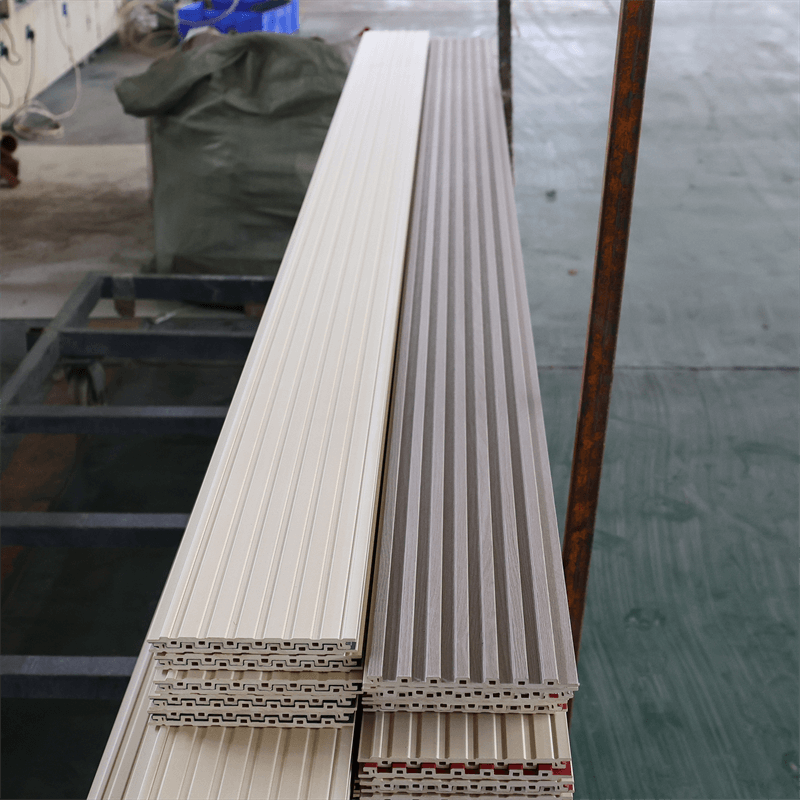
When it comes to building and designing with wood, the choice between traditional wood and Wood-Plastic Composite (WPC) panels is an important consideration.
Both materials have their merits and serve different purposes in various applications.
Traditional wood has been the go-to building material for centuries, valued for its natural beauty and versatility.
On the other hand, WPC panels, a relatively modern innovation, combine wood fibers with plastic to offer enhanced durability and sustainability.
This article aims to delve into the advantages and differences between WPC and traditional wood,
helping readers make informed decisions when selecting the ideal material for their construction and design projects.
The Composition and Manufacturing Process
Traditional Wood Traditional wood, usually obtained from trees like oak, pine, or cedar, is a natural material composed primarily of cellulose fibers held together by lignin.
The manufacturing process for traditional wood involves felling trees, seasoning the timber, and processing it into lumber, boards, or other structural elements.
While this process has a long history and cultural significance, it can lead to deforestation and environmental concerns when not managed sustainably.
WPC Panels WPC panels, in contrast, are an engineered product that combines wood fibers or flour with thermoplastic polymers, typically derived from recycled materials.
The manufacturing process involves blending the wood fibers and polymers, followed by extrusion and molding to create the final product.
This process not only repurposes waste wood and plastic but also reduces the demand for virgin timber, making WPC panels an eco-friendly alternative.

Advantages of WPC Panels over Traditional Wood
Sustainability One of the key advantages of WPC panels is their sustainable nature.
By utilizing recycled wood and plastic, WPC panels contribute to reducing waste and conserving natural resources.
This eco-friendly approach helps mitigate deforestation and alleviates the environmental impact of construction and design projects.
Choosing WPC panels over traditional wood supports sustainable practices and demonstrates a commitment to the preservation of our ecosystems.
Durability and Longevity WPC panels surpass traditional wood in terms of durability and longevity.
Traditional wood is susceptible to decay, rot, and insect infestations, especially when exposed to outdoor elements.
WPC panels, being resistant to these issues, have a significantly longer lifespan, making them a cost-effective choice in the long run.
Moreover, WPC panels do not splinter or crack easily, enhancing their safety and usability in various applications.
Moisture and Weather Resistance Traditional wood tends to absorb moisture, leading to swelling, warping, and eventual deterioration.
WPC panels, engineered to be highly resistant to moisture, perform exceptionally well in outdoor environments, such as decking and cladding.
Their weather-resistant properties ensure that they retain their beauty and structural integrity despite exposure to rain, snow, and sunlight.
Low Maintenance WPC panels demand minimal maintenance compared to traditional wood products.
They do not require staining, painting, or sealing to preserve their appearance and functionality.
A simple cleaning with mild soap and water is sufficient to maintain the aesthetics of WPC panels,
making them a practical and time-saving choice for homeowners and businesses alike.
Advantages of Traditional Wood over WPC Panels
Natural Beauty and Aesthetics Traditional wood boasts an authentic and timeless beauty that is hard to replicate.
Its unique grain patterns, textures, and colors create an unmatched warmth and charm, making it an ideal choice for interior design and decorative elements.
While WPC panels offer a wood-like appearance, some purists may still prefer the natural beauty of traditional wood.
Ease of Modification and Repair Traditional wood is more flexible when it comes to modification and repair.
It can be easily cut, shaped, and carved to fit specific requirements or to accommodate changes during construction.
Additionally, in the event of damage, individual wood pieces can be replaced or repaired without affecting the entire structure, offering greater versatility in maintenance and repair.

Choosing the Right Material for Your Project
Considerations for WPC Panels, Outdoor Applications: For decking, cladding, and fencing in outdoor spaces,
WPC panels are the superior choice due to their durability, moisture resistance, and low maintenance requirements.
Sustainability: If eco-friendliness is a priority in your project, WPC panels offer a more sustainable option by using recycled materials and reducing the demand for natural wood.
Considerations for Traditional Wood, Interior Design: For interior design and decorative elements where aesthetics and
natural beauty are paramount, traditional wood excels in providing a warm and timeless appeal.
Customization: Traditional wood offers more flexibility in customization and modification, making it suitable for intricate designs and bespoke projects.
When it comes to choosing between WPC panels and traditional wood, understanding the advantages and differences of each material is essential.
WPC panels offer superior sustainability, durability, and low maintenance, making them an excellent choice for outdoor applications and eco-friendly projects.
On the other hand, traditional wood remains unrivaled in its natural beauty and is a preferred option for interior design and customization.
Ultimately, the decision should align with the specific requirements of your project and the values you wish to promote.
By carefully considering the application, environment, and design preferences,
you can select the ideal material to enhance your construction and design projects while contributing to a more sustainable and resilient future.
